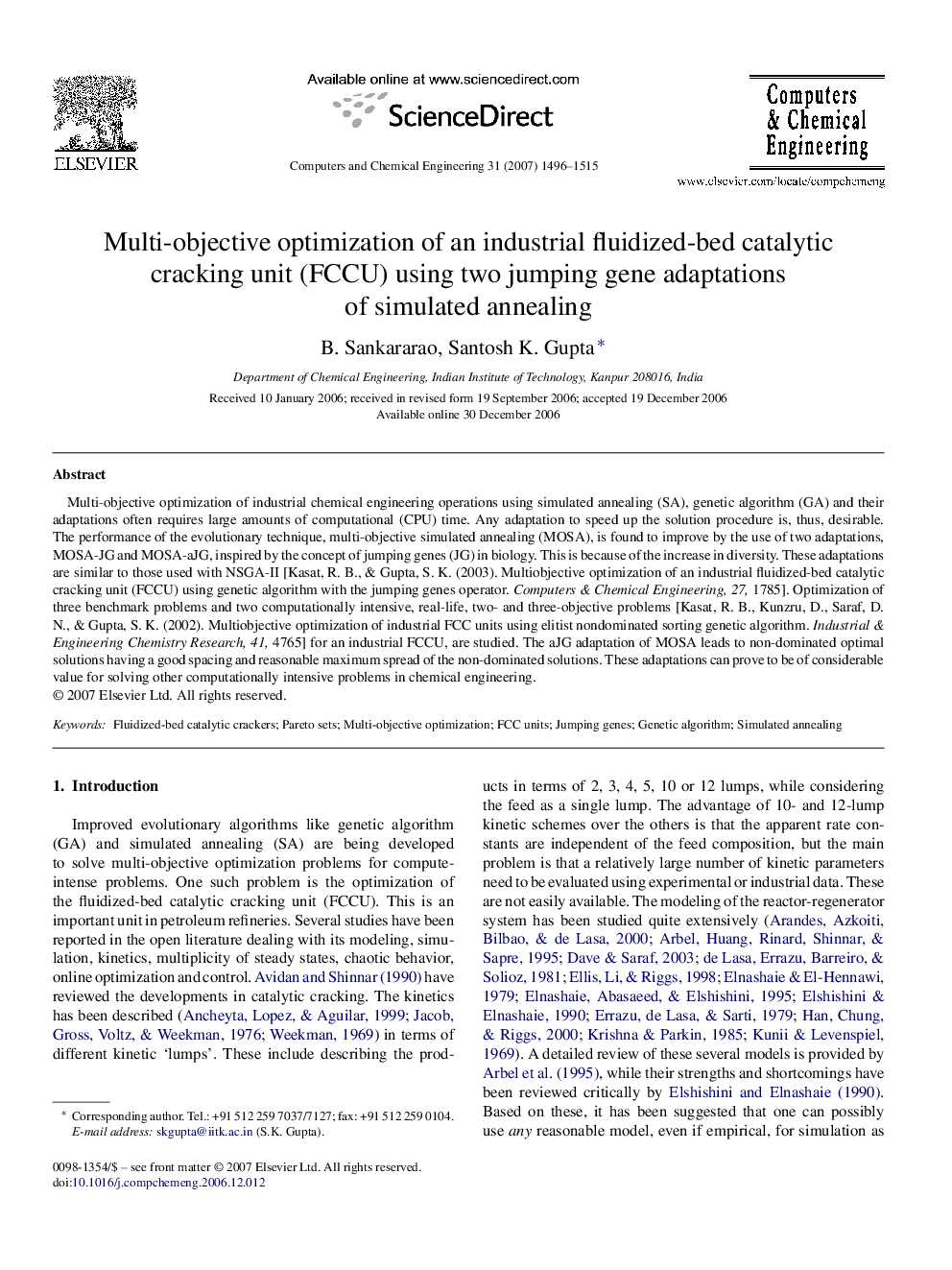| کد مقاله | کد نشریه | سال انتشار | مقاله انگلیسی | نسخه تمام متن |
|---|---|---|---|---|
| 174049 | 458625 | 2007 | 20 صفحه PDF | دانلود رایگان |

Multi-objective optimization of industrial chemical engineering operations using simulated annealing (SA), genetic algorithm (GA) and their adaptations often requires large amounts of computational (CPU) time. Any adaptation to speed up the solution procedure is, thus, desirable. The performance of the evolutionary technique, multi-objective simulated annealing (MOSA), is found to improve by the use of two adaptations, MOSA-JG and MOSA-aJG, inspired by the concept of jumping genes (JG) in biology. This is because of the increase in diversity. These adaptations are similar to those used with NSGA-II [Kasat, R. B., & Gupta, S. K. (2003). Multiobjective optimization of an industrial fluidized-bed catalytic cracking unit (FCCU) using genetic algorithm with the jumping genes operator. Computers & Chemical Engineering, 27, 1785]. Optimization of three benchmark problems and two computationally intensive, real-life, two- and three-objective problems [Kasat, R. B., Kunzru, D., Saraf, D. N., & Gupta, S. K. (2002). Multiobjective optimization of industrial FCC units using elitist nondominated sorting genetic algorithm. Industrial & Engineering Chemistry Research, 41, 4765] for an industrial FCCU, are studied. The aJG adaptation of MOSA leads to non-dominated optimal solutions having a good spacing and reasonable maximum spread of the non-dominated solutions. These adaptations can prove to be of considerable value for solving other computationally intensive problems in chemical engineering.
Journal: Computers & Chemical Engineering - Volume 31, Issue 11, November 2007, Pages 1496–1515